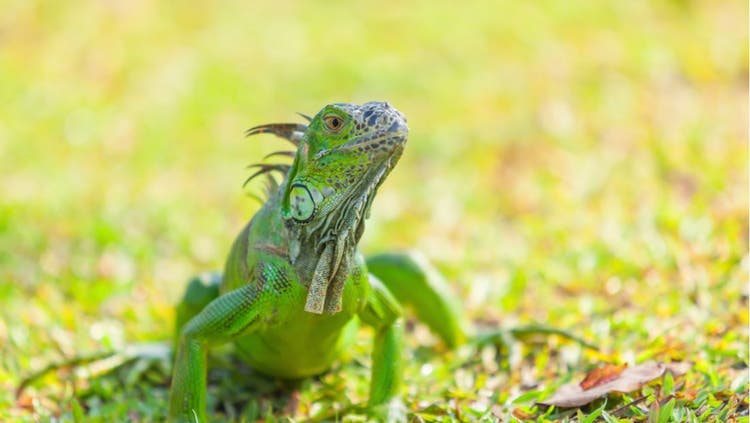
Are You Ready for Big Reptiles?
The popularity of reptiles and amphibians as pets has risen meteorically, and animals that were once uncommon are now available even in a variety of “designer” color morphs. In many respects, this bodes well for the animals involved. Improved husbandry translates into healthier pets and captive breeding often eliminates pressures on wild stocks.
But there is a problem: Pet owners often underestimate how much responsibility comes with keeping a reptile or amphibian. This is often because many “herps” are generally inactive and thus are perceived as requiring little care, or that the hobby is newer to the general public and there are fewer sources of warning to newcomers. Whatever the reason, lack of foresight has resulted in a huge population of unwanted pets and has had disastrous consequences for the animals involved and for human health and safety.
The work and expense involved in providing optimal conditions are far greater than the uninitiated can imagine. Lighting, heating, diet, seasonal variation (cool/ warm or wet/dry seasons, for example) and enclosures must all be considered. Appropriate veterinary care is often difficult to find and is expensive. And, unfortunately, the picture is complicated by the often useless advice provided by pet shops and others seeking to make a sale. There are, of course, concerned individuals in the pet business as well.
Popular Reptiles Grow to Large Sizes
Size is a major issue. Some of the most popular reptile pets, and those that are easiest and least expensive to obtain, grow to very large sizes. Green iguanas, Burmese pythons and, more recently, spur-thighed tortoises, have flooded the market. Young ones can be reared to full size in a surprisingly short period of time – a draw to certain people but detrimental to the animal’s health.
Young iguanas, raised on farms in Central America, are often included free of charge when an aquarium is purchased. Growing to six feet in length, male green iguanas become unpredictable and even dangerous in the breeding season. Owners are often lulled into a false sense of security by the placid dispositions of young animals, and they begin handling their pets with little regard for the powerful jaws.
What they fail to recognize is that hormonal surges can change a male iguana’s temperament overnight (literally). One acquaintance of mine, an experienced zoo-keeper, was bitten on the throat. The wound required 18 stitches to close. You can well imagine the damage that can be inflicted on an unprepared hobbyist.
Large Reptiles Get Run of House
The impracticality of caging such large animals often leads folks to give their pets the run of the home. The animal will inevitably knock over a lamp, heater or other appliance. Many fires have been started in this manner and lesser havoc, such as “skydiving” iguanas, is likely. Interactions with other pets is also to be considered – my uncle’s beagle nearly lost on eye to the whip-like tail of an angry iguana, and a friend’s poodle was nearly eaten by a Burmese python.
Another often-overlooked hazard is the potential transmission of Salmonella and other nasty microorganisms. It is very easy to contract Salmonella from surfaces upon which an animal has walked. This is possible even if one follows common sense practices regarding hand washing after animal contact. This fact was borne out recently when many visitors to a major zoo contracted Salmonella after leaning on a guardrail at a Komodo dragon exhibit. A keeper who had worked with the animals had apparently touched the rail.
Also to be considered is that female iguanas (and indeed, females of many species) may retain eggs if proper deposition sites or other normal stimuli are not provided. Veterinary intervention is expensive, and even then the animal often dies.
A misplaced display of machismo draws many to the large constrictors, and none attains an impressive size as quickly as the Burmese python. Even more than with the green iguana, the generally peaceful ways of the Burmese python belie dangerous propensities. One case in which I was involved concerned a large, strong 19-year-old man who lost consciousness within seconds when his 12-foot (these snakes can top 20 feet) python exerted pressure against the carotid arteries of his neck. It was then a simple matter for the snake to continue constricting the man until, sadly, he ceased breathing and died. The man had handled a chicken moments before the incident, and the snake was likely acting in response to the bird’s odor, even though it had no hope of swallowing its victim.
I could go on with similarly horrific stories – these are not animals to be treated lightly. Free roaming or escaped pythons have started fires and floods, and have consumed a host of furry pets. I have, on several occasions, assisted the New York City Police Department in capturing escaped “pet” pythons that have roamed apartment buildings for years. (Despite their size, pythons are very hard to find). Tragically, one such escapee killed an infant child. As they combine the typical serpent propensity to escape with brute strength, large constrictors are extremely hard to contain within an enclosure.
Despite the impressive size and beauty of such animals, folks who are not deeply interested soon grow bored with their sedentary lifestyles. Zoos absolutely will not accept them, and private placement is difficult and usually continues the unfortunate cycle.